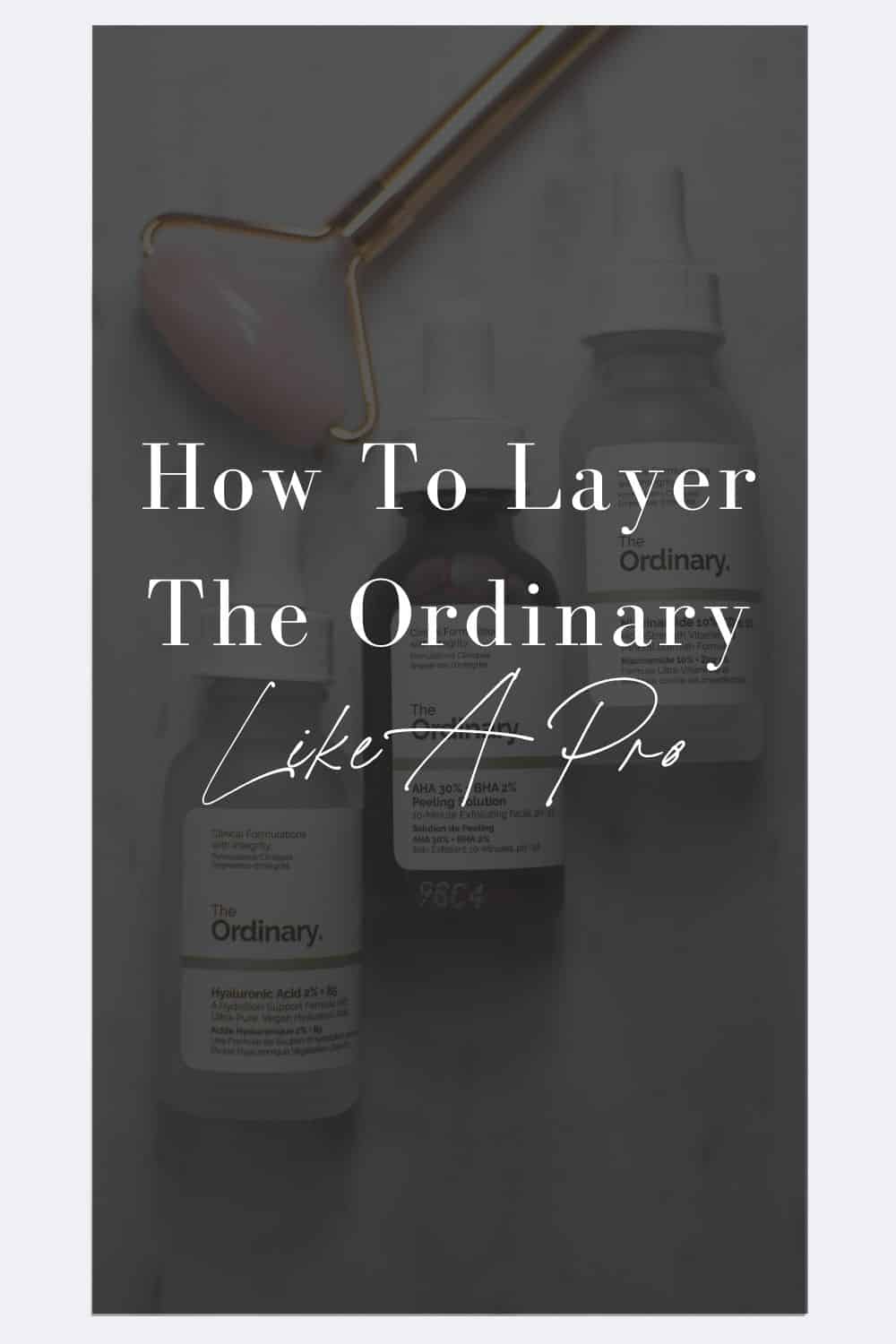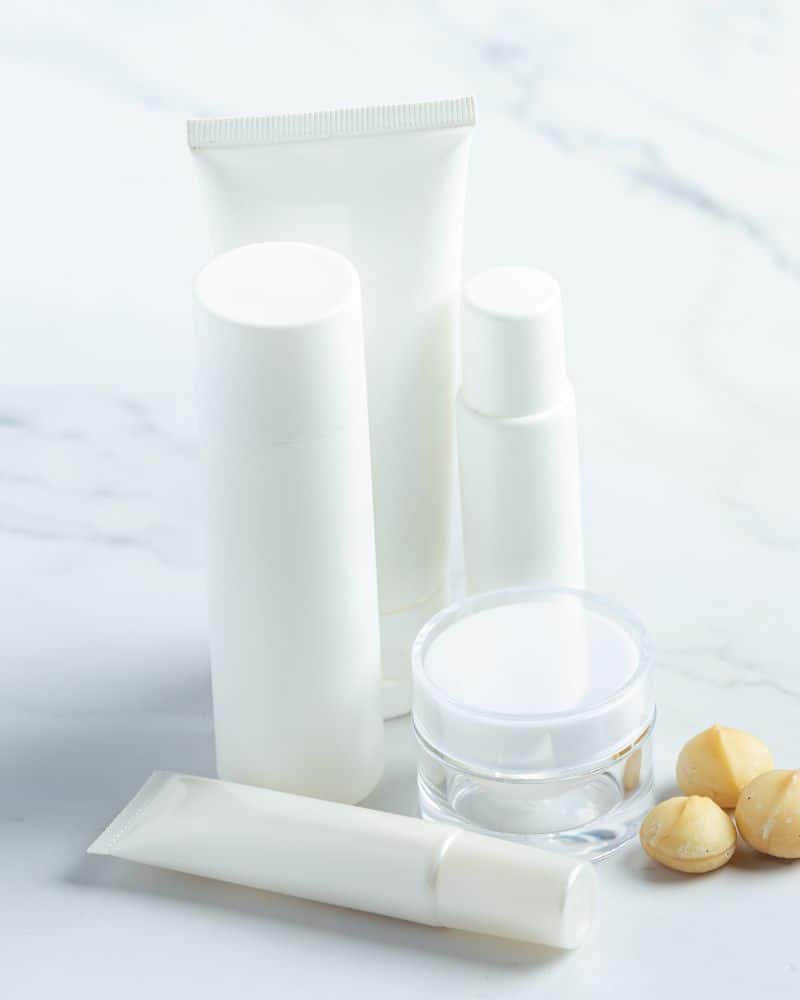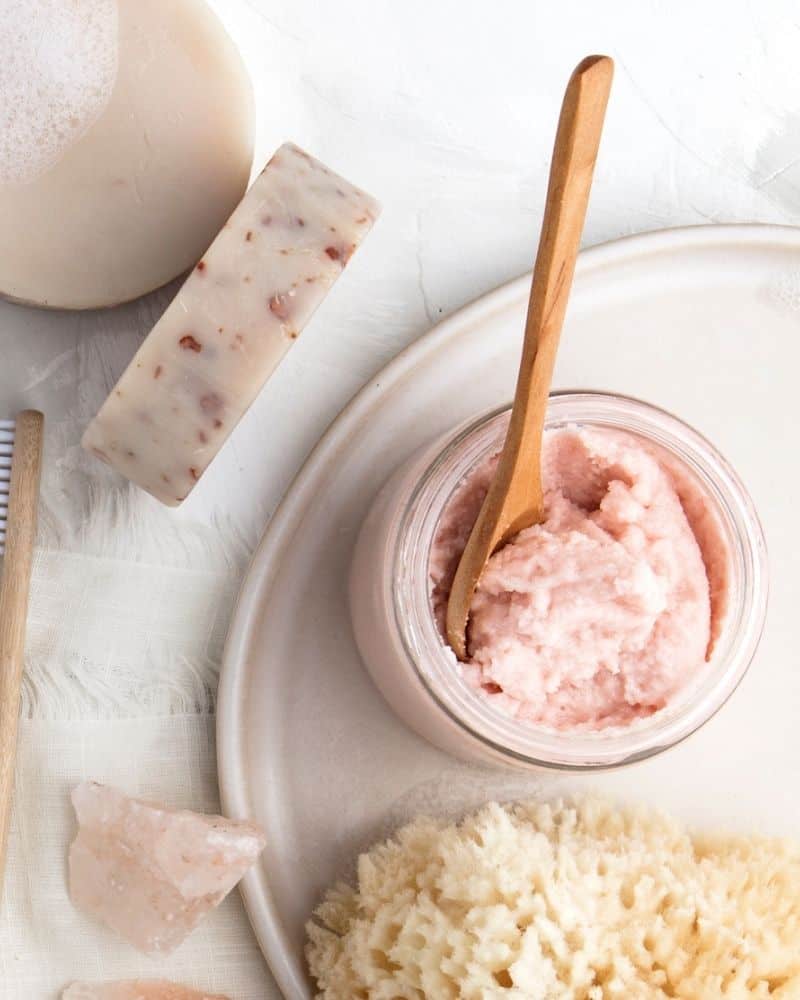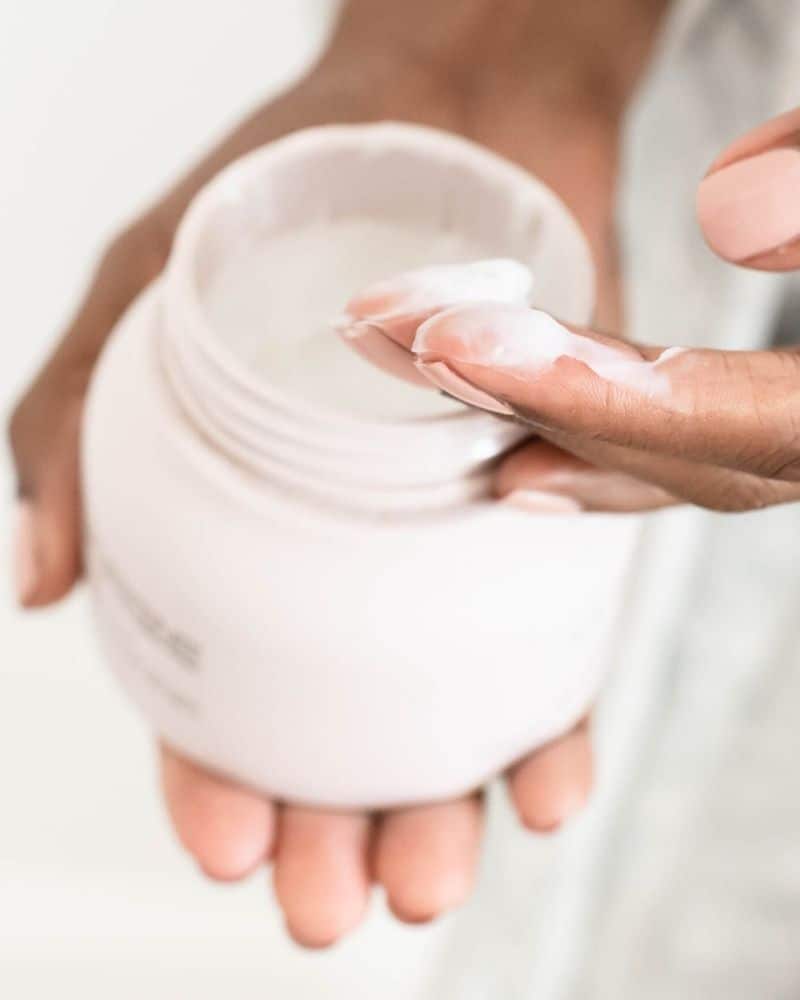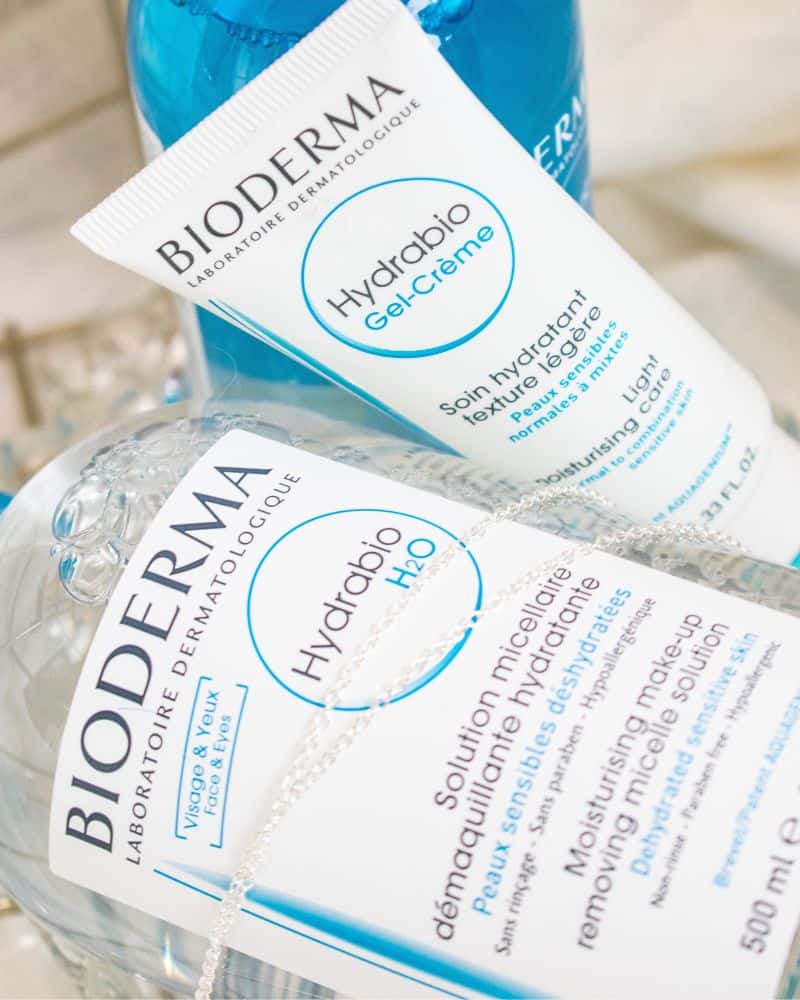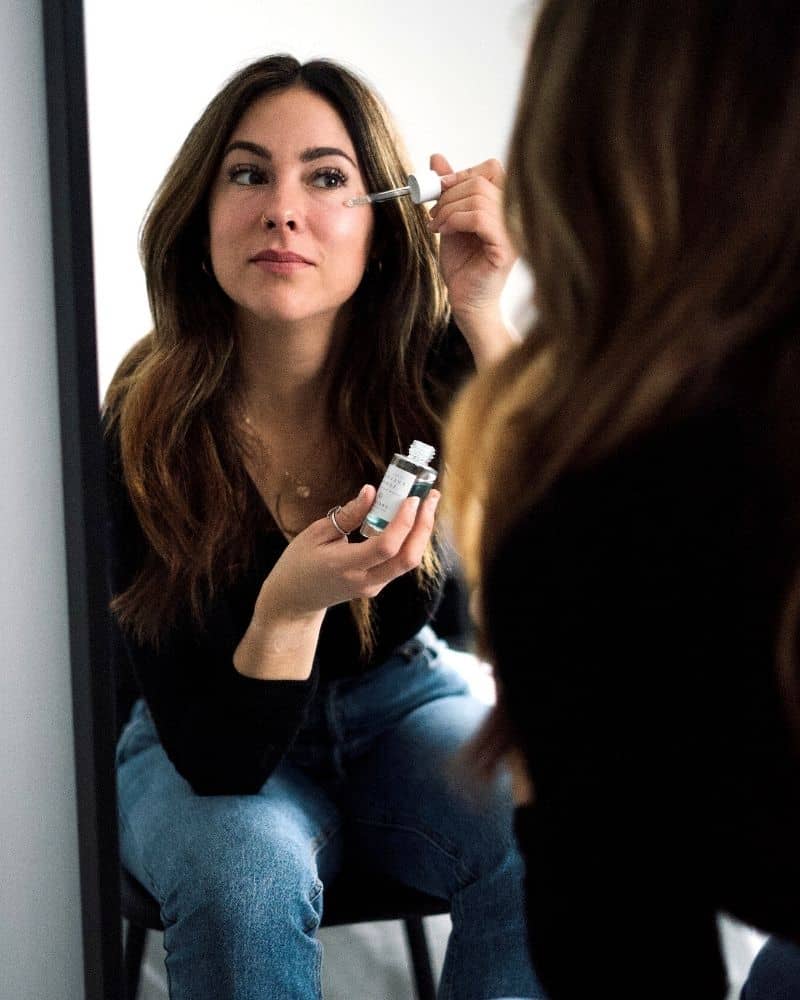How To Layer The Ordinary Products: A Simple Guide
This post may contain affiliate links.
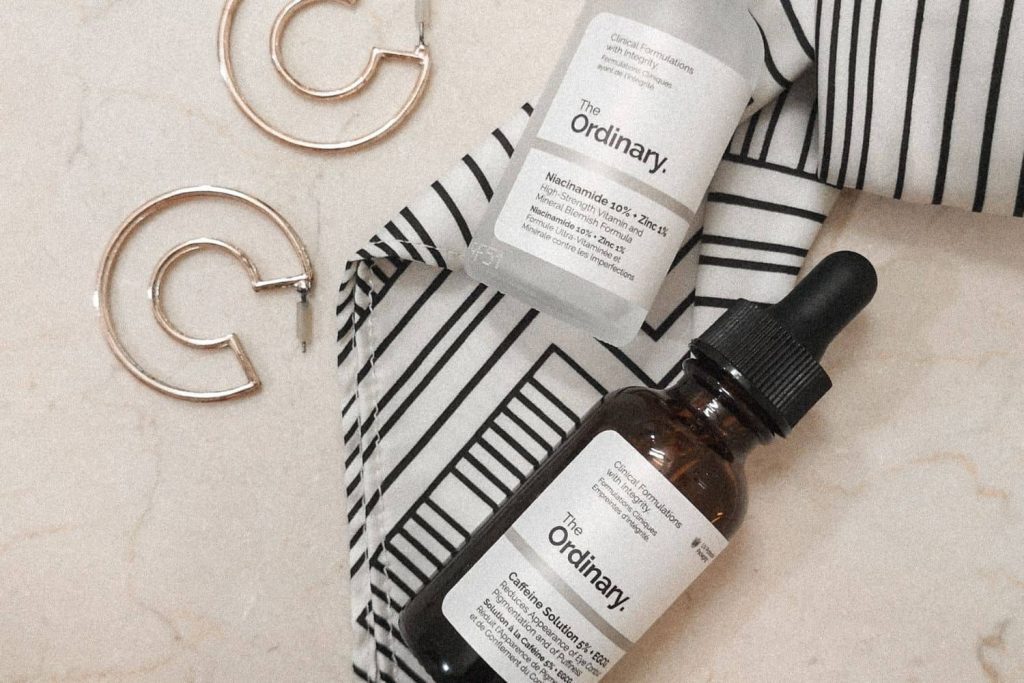
How Do You Layer The Ordinary Products?
If you’re looking to start a new skincare routine or upgrade your current skincare products, The Ordinary is a great, affordable brand with well-formulated products. Perfect for beginners and pro’s alike. But with so many different products and steps, it can be confusing to know which order they should go in. Here’s a beginner’s guide on how to layer The Ordinary products like a pro to create the perfect skincare routine.
With ingredients for almost every skin type and concern, you can create a skincare routine almost fully consisting of The Ordinary products. And since they’re so affordable, it’s a great brand for anyone to try when first starting to get into skincare.
Keep on reading to find out how to layer The Ordinary products the right way.
Why Layering Your Skincare Products Matter
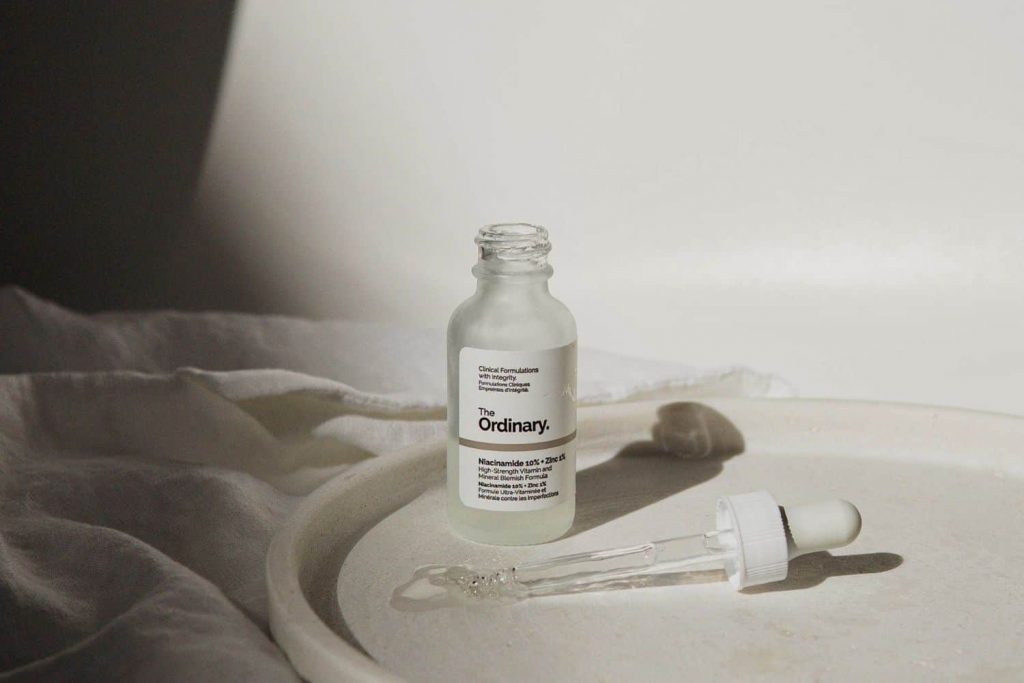
When you layer your products in the right order, you are getting maximum benefit out of all of your products. You don’t want to waste money on good skincare products if they’re not going to work, right? That’s why it’s so important to learn how to layer skincare products properly.
For example, say you have an anti-oxidant serum and a moisturizer. The serum has a much thinner, watery consistency as well as lots of ingredients that need to penetrate the skin in order to be effective. If you apply your moisturizer first, then your serum won’t be able to sink in as well, and therefore it won’t be as effective.
Rule of thumb: skincare should be applied thinnest to thickest. Of course, there are some exceptions to this rule!
What Order Do You Apply The Ordinary Products?
Deciem, The Ordinary’s parent company has their own recommendations for what order to apply The Ordinary products. Within The Ordinary brand, there are 5 different types of products and here is the recommended order to apply these different products:
- Water
- Anhydrous
- Oil
- Emulsion
- Suspension
Now, water and oil are more self-explanatory, but I know you’re probably thinking “what the heck is an anhydrous, emulsion and suspension?!” Don’t worry, I’ll teach you everything you need to know about what these are and how to layer them properly.
There are a few exceptions to these rules, and I’ll get into those later, but this is a foolproof guide on how to layer The Ordinary products for best results (and simplicity).
The Ordinary Water-Based Products
- AHA 30% + BHA 2% Peeling Solution
- Glycolic Acid 7% Toning Solution
- Lactic Acid 5% + HA
- Lactic Acid 10% + HA
- Mandelic Acid 10% + HA
- Salicylic Acid 2% Solution
- Amino Acids + B5
- Hyaluronic Acid 2% + B5
- Marine Hyaluronics
- Alpha Arbutin 2% + HA
- Caffeine Solution 5% + EGCG
- Niacinamide 10% + Zinc 1%
- “Buffet”
- “Buffet” + Copper Peptides 1%
- Argireline Solution 10%
- Matrixyl 10% + HA
- Ascorbyl Glucoside Solution 12%
The Ordinary Anhydrous Products:
- EUK 134 0.1%
- Resveratrol 3% + Ferulic Acid 3%
- Pycnogenol 5%
- Granactive Retinoid 2% in Squalane
- Granactive Retinoid 5% in Squalane
- Retinol 0.2% in Squalane
- Retinol 0.5% in Squalane
- Retinol 1% in Squalane
- Ascorbic Acid 8% + Alpha Arbutin 2%
- Ethylated Ascorbic Acid 15% Solution
The Ordinary Oil Based Products:
- “B” Oil
- 100% Organic Cold-Pressed Borage Seed Oil
- 100% Organic Cold-Pressed Moroccan Argan Oil
- 100% Organic Cold-Pressed Rose Hip Seed Oil
- 100% Organic Virgin Chia Seed Oil
- 100% Cold-Pressed Virgin Marula Oil
- 100% Organic Virgin Sea-Buckthorn Fruit Oil
- 100% Plant-Derived Squalane
- Ascorbyl Tetraisopalmitate Solution 20% in Vitamin F
The Ordinary Emulsion Products
- Natural Moisturizing Factors + HA
- Granactive Retinoid 2% Emulsion (Previously Advanced Retinoid 2%)
- Mineral UV Filters SPF 15 with Antioxidants
- Mineral UV Filters SPF 30 with Antioxidants
The Ordinary Suspension Products
- Azelaic Acid Suspension 10%
- Vitamin C Suspension 23% + HA Spheres 2%
- Vitamin C Suspension 30% in Silicone
How To Layer The Ordinary Products
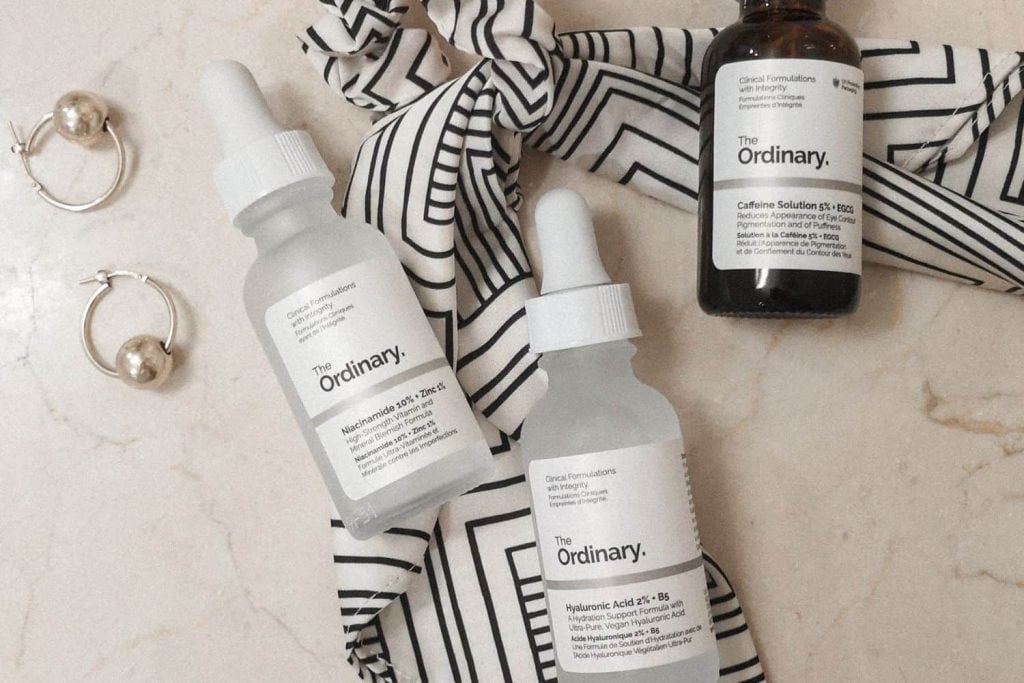
If you’re wondering what order do you apply The Ordinary products, then keep reading for the best skincare routine order for The Ordinary so that your products work effectively. Remember, if you are using your products in the wrong order, then they won’t be as effective.
So, with the above rules about layering their products, this is what your The Ordinary skincare routine would look like:
- Cleanser
- Water-based products
- Anhydrous Products
- Oils
- Emulsions
- Suspensions
STEP 1: Cleanser
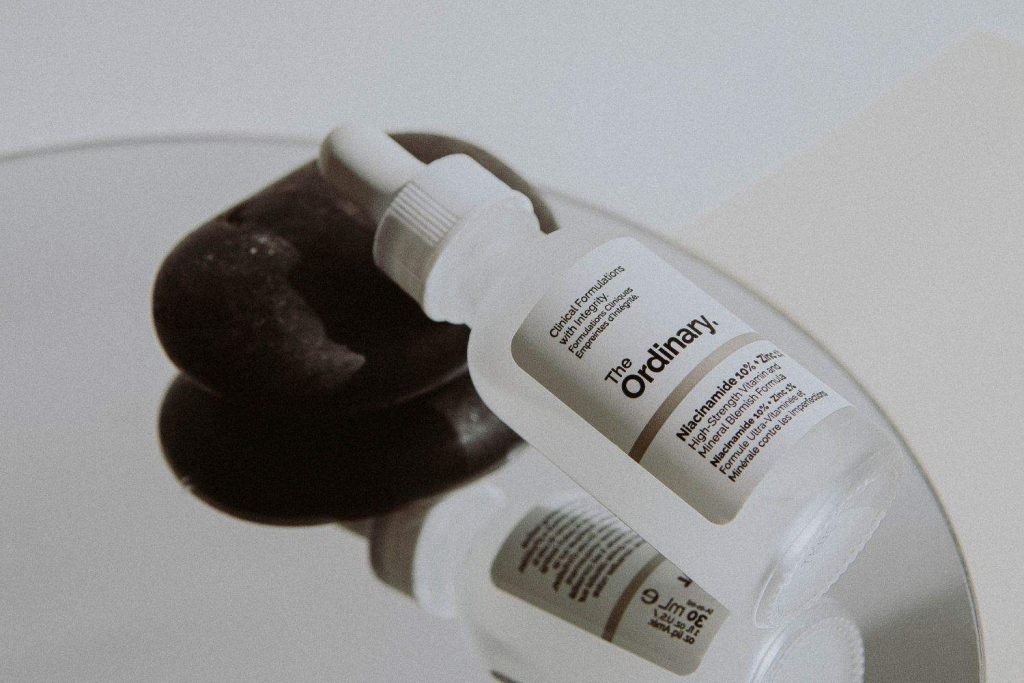
If you do anything on this list, make sure you are washing you face at night! Cleansing is the single most important step in your skincare routine. If your skin is covered in makeup, dirt and oils, your skincare products will not be able to sink in properly and won’t be as effective.
Properly cleansing your skin ensures that all the makeup, oil and grime are washed away and your skincare products have a blank canvas and will absorb better.
If you wear makeup or sunscreen, you should double cleanse. Try an oil cleanser to remove makeup and followup with a second, gentle cleanser to remove any residue and any leftover oil, dirt and bacteria.
Since The Ordinary only has one cleanser, currently, you can replace this with other cleansers, if you’d like. Just be sure to use a gentle cleanser.
Step 2: Water Based Products
This is the step where most of your “actives” will be, aside from retinoids and most vitamin c’s. These are the products that will either exfoliate or hydrate your skin. Within The Ordinary’s water-based products, you’ll have things like AHA, BHA, hyaluronic acid, niacinamide, etc.
These are all thin, water-based products, so they’re about the consistency of water, or a little thicker. These will go on your skin right after cleansing.
If you use multiple water-based products, I recommend using any AHA/BHA first, and then following with any of the other serums from the list above.
Step 3: Anhydrous Products
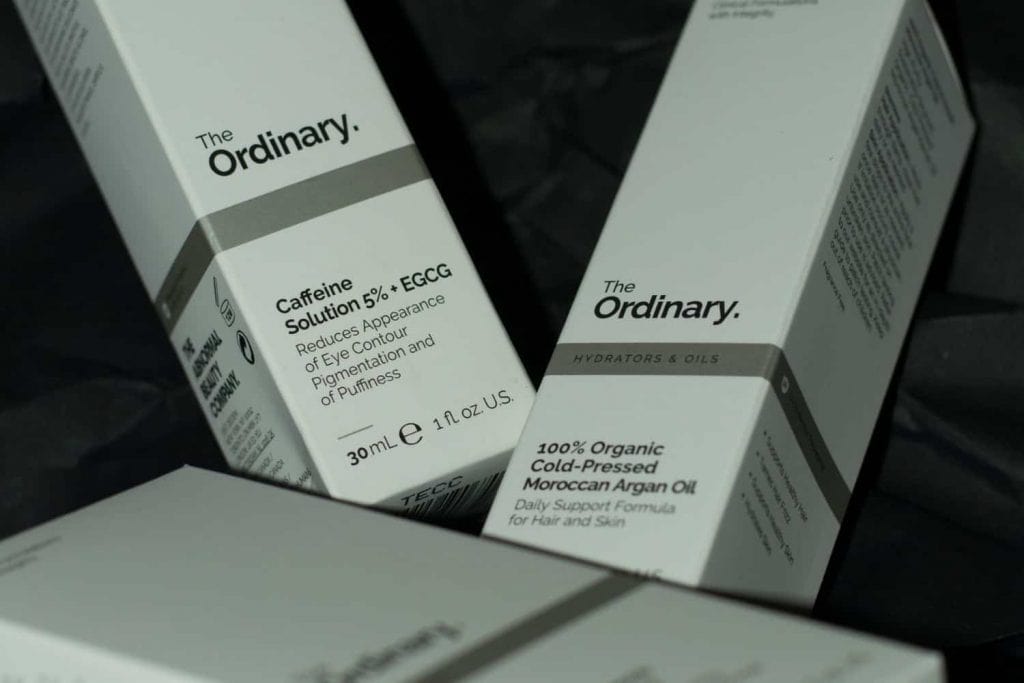
This category mainly consists of retinoids, but also has some vitamin c’s and antioxidants. These will come after your water-based serums. For the most part, the antioxidants are best using during the day, and the retinoids should always be used at night. Retinol’s should only be used at night because they degrade in the sun.
Therefore, you can easily use 2 different products from this category – one for daytime (antioxdiant) and one for nighttime (reitnoid).
Step 4: Oils
Many people disagree with Deciem’s recommendation to put oils on before things like emulsions, suspensions and creams. It all comes down to personal preference. I’ve personally tried it both ways and do find that using oils before a moisturizer can help the oil penetrate the skin better.
If you use sunscreen during the day, you should never really use oil on top of it. Just keep that in mind, if you want to change up the order of your products. However, you can certainly leave oils as your last step at night, if you’d like. Just try both and see what works best for you.
Step 5: Emulsions
This is where I start to disagree with The Ordinary’s recommendation of product order. I personally think sunscreen should always be applied last, and with this recommendation, you would be applying any suspensions over the sunscreen. This can cause the sunscreen to not be as effective, which is why I always choose to use sunscreen as the very last step in my routine.
I would personally also use the Natural Moisturizing Factors as the last step at night and right before sunscreen in the morning. However, take this with a grain of salt. Although this is what The Ordinary recommends as far as layering their products, there’s always a little room for doing your own thing.
Step 6: Suspension
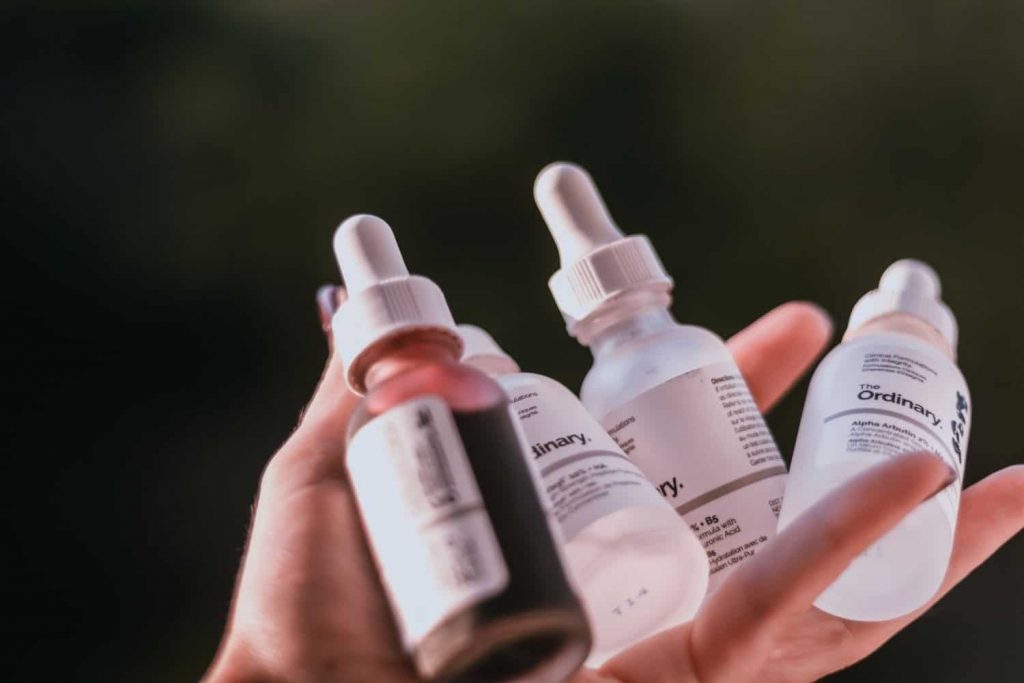
The Ordinary only has 3 products in this category currently, and they are vitamin c and azelaic acid. Since these are considered “actives” I would personally use them before my moisturizer (Natural Moisturizing Factors, or other moisturizer). However, again this is down to personal preference.
It’s likely The Ordinary recommends this product order because of the consistency/formulation of these suspensions. These tend to be pretty thick products, so it goes along with the thinnest to thickest product order recommendation.
How To Layer The Ordinary Skincare Acids & Actives
Many people wonder can you layer acids on your face? Using acids or actives, like glycolic acid or vitamin c in your routine is great! However, you still need to make sure you’re layering your products correctly so they work like they are supposed to.
Some actives, when combined, will render each other ineffective so make sure to beware of what skincare ingredients are in your products. Below I will go into detail about ingredients you should not layer together.
How do you layer active ingredients in skincare? Usually, you can still follow the thinnest to thickest rule, and that’s usually what I do in my routine. So if you’re wondering how to layer skincare skincare with retinol, differin, vitamin c or other acids, then this rule will always apply.
For example, if your active is a glycolic acid toner, you would just apply the toner in the same spot you would apply any other toner, so right after cleansing. If you’re using a vitamin c serum, again, you would just use it in spot as laid out above.
Related Post: Micellar Water VS Toner: What’s The Difference?
Although there are some skincare ingredients you should not layer together, many times, all actives can be used in the same routine by using them at different times. For example, if you use a retinol and benzoyl peroxide, you would separate these in your routine by using the benzoyl peroxide in the morning and the retinol at night.
How To Layer Skincare Serums
If you use multiple serums, say a vitamin c serum, hyaluronic acid serum and a niacinamide serum, you may be wondering what order to apply those serums in. First, you should still apply the thinnest to thickest rule. Whichever serum is thinner, apply that one first, then next thickest, etc.
If your serums are about the same consistency, then you should apply either the exfoliating or vitamin c serum first. Ideally, I would do the vitamin c serum since it works best at a lower pH. Then apply the exfoliating serum and then the hyaluronic acid serum.
Which The Ordinary Products Should Not Be Mixed?
There are certain ingredients that you should not layer or use together. Certain skincare ingredients, when combined, will render each other ineffective. So, it’s important to keep these in mind and make sure you aren’t layering them in your skincare.
However, please keep in mind that you can certainly use these products, just not together. For example, you should not use acids (aha, bha, retinoids) and peptides one right after another. However, you can use peptides during your morning routine and acids during your nighttime routine.
Here are The Ordinary Products that should not be used together.
Retinol and Acids
The Ordinary’s Retinoids should not be used with their acids (aha, bha). Not only will this be extremely irritating and drying to your skin, they can also render each other ineffective, so it’s best to use them on alternate nights.
BHA can be used safely during the day, but AHA and retinoids should only be use at night.
Retinol & Peptides
Retinol and peptides are two ingredients that should not be layered in your The Ordinary (or any) skincare routine. However, these are both amazing ingredients and it would be a shame for you not to use them because of this. All you need to do is use peptides during the day and retinoids at night.
Niacinamide and Vitamin C
Both of these products on their own are very powerful and effective, but when combined, can cause facial flushing and irritation. Again, use one during the day and the other during the night if you use both of these in your skincare routine.
Vitamin C and Other Actives
Vitamin c works best at an optimal pH, and when you add an active (like an AHA or BHA) on top, that will change the pH and the vitamin c won’t be as effective. Try separating these two products in your routine, or use a wait time of at least 15 minutes before applying the next step.
The Ordinary Skincare Routine: Examples
And if you’re still confused on how to layer the ordinary products, I have made some routine examples down below to help.
I know skincare can be confusing and learning what order to use everything in is certainly the worse part. So, here are some example routines to help clear up any confusion and questions about how to layer The Ordinary products.
How To Layer The Ordinary Products For Acne
How to combine The Ordinary products for acne? Here’s an example routine for acne-prone skin.
Morning:
- Cleanser
- Salicylic Acid 2% Solution
- Niacinamide 10% + Zinc 1%
- Resveratrol 3% + Ferulic Acid 3%
- Natural Moisturizing Factors + HA
- Mineral UV Filters SPF 30 with Antioxidants
Evening:
- Cleanser
- Hyaluronic Acid 2% + B5
- Retinol 1% in Squalane
- 100% Organic Virgin Chia Seed Oil
- Natural Moisturizing Factors + HA
How To Layer The Ordinary Products For Hyperpigmentation
Here is a The Ordinary skincare routine for hyperpigmentation, dark spots and acne scars. Of course, they have many other products that will help with these issues, so don’t feel like you have to choose these exact products!
Morning:
- Cleanser
- Alpha Arbutin 2% + HA
- Ascorbyl Glucoside Solution 12%
- Natural Moisturizing Factors + HA
- Mineral UV Filters SPF 30 with Antioxidants
Evening:
- Cleanser
- Alpha Arbutin 2% + HA
- Granactive Retinoid 5% in Squalane
- 100% Plant-Derived Squalane
- Natural Moisturizing Factors + HA
How To Layer The Ordinary Products For Anti-Aging
The Ordinary has great products for those who want an anti-aging routine. Here are some of the best products they offer for anti-aging and the correct order.
Morning:
- Cleanser
- “Buffet” + Copper Peptides 1%
- Ethylated Ascorbic Acid 15% Solution
- Natural Moisturizing Factors + HA
- Mineral UV Filters SPF 30 with Antioxidants
Evening:
- Cleanser
- Hyaluronic Acid 2% + B5
- Granactive Retinoid 5% in Squalane
- 100% Organic Cold-Pressed Moroccan Argan Oil
- Natural Moisturizing Factors + HA
How To Layer The Ordinary Products: Wrap Up
I hope this guide on how to layer The Ordinary skincare products was helpful. Learning how to layer skincare products correctly can certainly be confusing, especially when it comes to The Ordinary because they have so many different products.
If you’re still confused or just starting out, you can reach out to Deciem for help. They also have a great routine builder. So if you’re completely lost, they can recommend the right products and order. Or you can drop a comment down below and I’d be happy to help out!
Related To How To Layer The Ordinary Products
- The Best The Ordinary Products For Acne Scars
- Can You Use Niacinamide with Hyaluronic Acid?
- Does Hyaluronic Acid Help Acne?
- Retinol Vs Hyaluronic Acid
- What To Use After The Ordinary Peeling Solution
How To Layer The Ordinary Products
